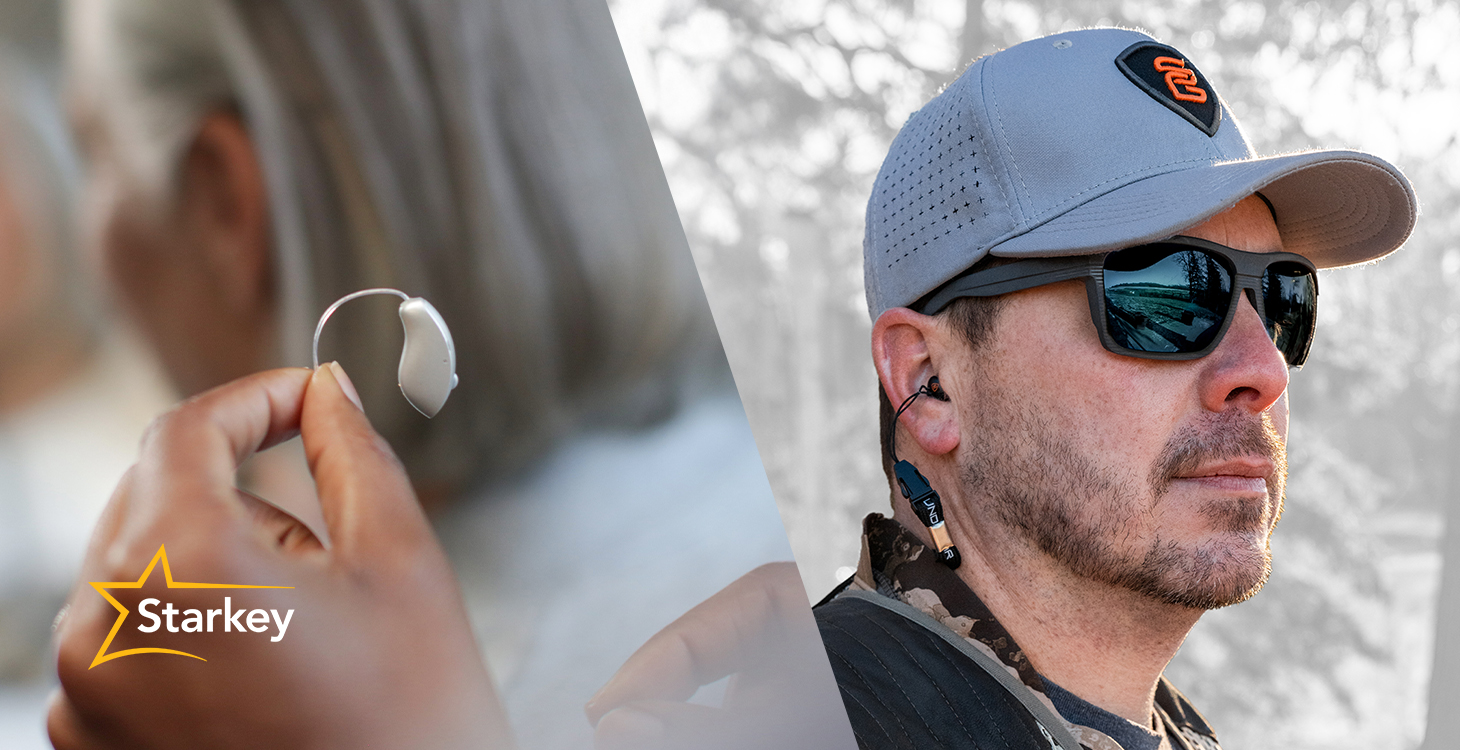Nothing brings life “to life” like sound—always inviting us to be part of each and every moment. Let’s talk about “sounds” for a moment:
There are the important sounds we can’t imagine life without—everything from lapping waves at our feet to catch-up conversations with our loved ones. Obviously, we want to continue hearing these sounds for the sake of preserving our connections with others and our overall quality of life.
So, if we develop hearing loss, whether age-related (presbycusis) or otherwise, hearing aids are an effective solution for helping us hear these beloved sounds again.
Then there are the louder, extensive, or sudden sounds that can feel a little more intense or even uncomfortable on our hearing—like stadium crowds, fireworks, or high-volume music from our earbuds. While we still may be enjoying ourselves in the excitement of such noise, continuous exposure over time can result in noise-induced hearing loss (NIHL).
NIHL occurs when excessively loud noise damages the hair cells in our inner ear and the hearing nerve. This can cause hearing loss immediately (if it’s sudden or impulse, like a siren or firecracker near the ear) or over time (if it’s continuous and higher volume, such as music from earbuds or noise from heavy machinery).
Because hearing damage caused by NIHL can be permanent and irreversible, it’s important to be proactive in preventing noise exposure in the first place—by either avoiding the noise altogether or by wearing hearing protection.
So, now that we’ve become acquainted with hearing aids and hearing protection, let’s explore how they work and how we can benefit from today’s state-of-the-art hearing and hearing protection technologies.

Hearing aids vs. hearing protection—how do they work?
Hearing aids, in basic speak, are small electronic devices that are placed in or behind the ear. They allow us to increase or decrease the amplification of sound, which can help us improve our ability to hear sound and understand speech.
This solution may sound simple, but today’s most innovative hearing technology goes one step smarter: working every second to not only improve our hearing through crystal-clear sound, but also to make it feel more natural.
Starkey’s Edge AI hearing aids, for example, have the functionality to mimic the brain’s auditory cortex—classifying complex soundscapes, enhancing speech, and reducing noise in real-time with advanced and powerful AI built into each hearing aid. All of this helps to reduce listening effort and listening fatigue.
Added features of Edge AI include the ability to stream calls, music, and PA announcements to the hearing aids—plus track our physical wellness, help improve balance, and more, when we easily pair the devices with the My Starkey app.
So, we can see why hearing aids are best worn daily. Edge AI can help us hear better in all situations (including those with sudden background noise), enhance our communication, maintain an active lifestyle, and reduce the risk of cognitive decline, isolation, depression, and falls. Better hearing, better quality of life.
Explore Starkey’s full hearing aid selection here.

Hearing protection, worn in (earplugs) or on (protective earmuffs) the ears, is designed to physically block sound waves from entering the ear so fewer decibels of sound can get in and potentially cause damage.
Starkey's latest hearing protection technology effectively helps to safeguard our hearing—and doesn’t stop there: Custom-molded to fit the ear, SoundGear Phantom hearing protection devices feature advanced digital technology that delivers instant noise suppression when loud sounds occur and cutting-edge sound enhancement in between loud sounds.
What this means: We can comfortably wear them during an entire activity—whether it’s hunting, working with machinery, or attending a concert—knowing we’ll be able to hear what we need to hear (e.g., environmental sounds, conversations) while protecting our hearing.
SoundGear Phantom devices also provide the added conveniences of being rechargeable and Bluetooth® compatible, which allows us to stream calls, music, or other audio directly from our smartphone to our hearing protection devices. (Note: If desired, less sophisticated-but-still-effective hearing protection is also available from SoundGear.)
Hearing protection is best worn in situations where we anticipate sudden, impulse, or continuous noise. So, for example, we may wear our devices daily at the workplace (e.g. if we use or work near power tools) or occasionally, like on a hunting trip or at a concert. By shielding our hearing with hearing protection, we can reduce the risk of noise-induced hearing loss and—similarly to hearing aids—maintain a healthy, active lifestyle and overall quality of life.
Explore SoundGear’s complete hearing protection selection here.
Learn more from a hearing care professional
If you think you may have hearing loss or realize that it’s time to start protecting your hearing—or both—your best next step is to reach out to a licensed hearing care professional. Simply type your zip code in here and you’ll generate a list of providers near you.
Here's to embracing all of life’s sounds while looking out for our hearing health.
